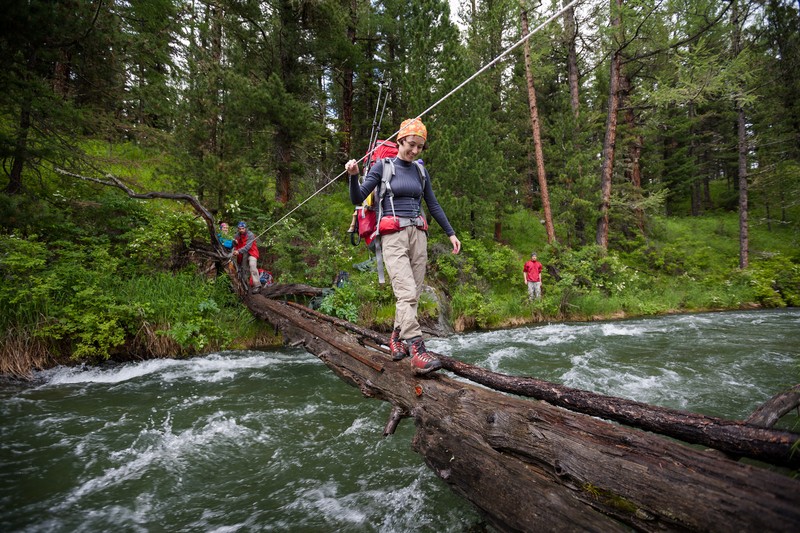Crossing a body of water is sometimes unavoidable and that means the associated risks of a water crossing have to be mitigated or at least reduced.
The following will tell you how to assess the water and give you some suggested alternatives that can help you make the crossing safer.
Assess your situation and the river
This is really the first thing to do in any situation, particularly a dangerous one. By the way, the best way to assess the actual river may be to climb to a higher point by either moving up a tree or hill.
But there is more to it than just that. Along with this, when it comes to a river crossing, here are some things to specifically assess.1. How important is it that you cross the river?: This is always something to consider anytime you come up against such a task. Rivers and rapids are dangerous. Thus, you should always ask yourself: Is this something I have to do?.
2. Who has to cross the river with you?: Crossing a river is dangerous enough alone; when you have other people with you the variability of what can happen is that much greater. How many people must cross? How strong and mature are these people (are kids with you)? Can all of the people with you swim, and if so how well?
All important questions when you're about to cross a river or rapids.
3. What's in the water with you?: Of course, it all depends where this river is. In North America you may want to check for bears in the area. In South America, Pirhanas may be in the water.
4. How fast is the river moving?: There is fast, and then there is fast, people. Figure out which one you're dealing with.
5. Do you have to cross the river where you're at?
Okay, so you've determined that you have to cross the river. But do you have to do it right where you're at? Can you go upstream or downstream a ways and find an easier crossing? Of course, that will depend on the amount of time you feel that you have and various other factors, including what you picked up about the river when you took it in at a higher point.
Are there sand banks, and if so where? Are there rocks, ledges, or waterfalls in the way?
Methods of crossing a fast moving river or rapids
Look for or knock down a tree: This one is simple in theory even if it may not be that easy to put into practice. Trees fall all the time around bodies of water. If one has already fallen and you can crawl across it above the fast moving water to safety, that may be the way to go.
Flotation devices: Depending on how far you can go downstream will determine whether or not this is a viable solution. However, if it's feasible to be swept down the current then a flotation device may just be the way to go for you and your party.Look for shallower and slower moving water: Keep in mind that these things can sometimes be deceiving. Remember that deeper water often moves at a much slower rate. Still, shallow water can also be easier to cross.
Considerations and things to do if attempting to swim or walk across a fast moving river
If you're going to attempt to walk across a river it may be a bad idea to simply walk across rocks in your boots, as you could very easily slip. Along with this, if the river is shallow enough where you can walk across it in such a manner, take your boots off (this provides you with better traction), get a strong stick, and use it like a cane to walk across. Further, enter angling upstream or against the current.
However, things change if you're going to have to swim across because the water is that fast moving and/ or deep.
Under such circumstances, look for a spot devoid or nearly devoid of rocks. First, rocky areas tend to be fast moving. Second, rocks are dangerous if you hit them.
Beyond this, you should pick a narrow part of the river to traverse and realize that under such circumstances you will need to move with the current, not against it. It would tire you out to fight the water.
Further, try to pick a spot to enter that will eventually land you on a sandbar when moving with the current, if possible. Try to time it so that this will happen. Also, you'll want to choose a spot to cross where you can safely reach the other side by traveling on a 45 degree angle. Taking off your clothes and putting them in a sack or tied off bag is probably also a smart idea, as you don't want to cross the river and then deal with hypothermia.
Oh yeah, and avoid waterfalls.
Sometimes crossing water on a hike or in s survival situation is unavoidable, but crossing water holds a lot of risks.
To mitigate or reduce them, you must consider some vital, basic assessment question first, before you even set foot in a body of water.
For more tips on water crossing, including some expert advice on crossing rapids, please visit Secrets of Survival.
